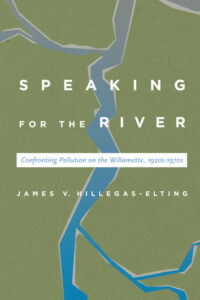 When it comes to green American cities, “put a bird on it” Portland is likely to be at or near the top of most any list – any list, that is, that doesn’t take into account the health of the large river that bisects it. I mean, of course, not the Columbia, which flows along the city’s northern border, but rather one of its major tributaries: the Willamette.
When it comes to green American cities, “put a bird on it” Portland is likely to be at or near the top of most any list – any list, that is, that doesn’t take into account the health of the large river that bisects it. I mean, of course, not the Columbia, which flows along the city’s northern border, but rather one of its major tributaries: the Willamette.
To those who live within the reach of the Portland-based media outlets, “sewer overflow alerts” are a regular part of most any heavy rainstorm. Then there are the remarkable number of active, as well as abandoned, industrial sites, waste-water discharges (both authorized and otherwise), and assorted other sources of pollution to take into account which make the Willamette a decidedly unappealing shade of green.
But this is not a new situation for the Willamette; it has long been, as James V. Hillegas-Elting explains in his new book Speaking for the River; Confronting Pollution on the Willamette, 1920s-1970s, abused by the growing city surrounding it. Focusing on the grassroots efforts that began in the 1920s, the book traces the progress as well as set-backs experienced by those seeking to clean up the Willamette. Valuable information indeed for those who today continue to undertake this challenge in otherwise vibrantly green Portland and the nearby also quite verdant Willamette Valley.
If you enjoyed reading this, please consider signing up for The Well-read Naturalist's newsletter. You'll receive a helpful list of recently published reviews, short essays, and notes about books in your e-mail inbox once each fortnight.
